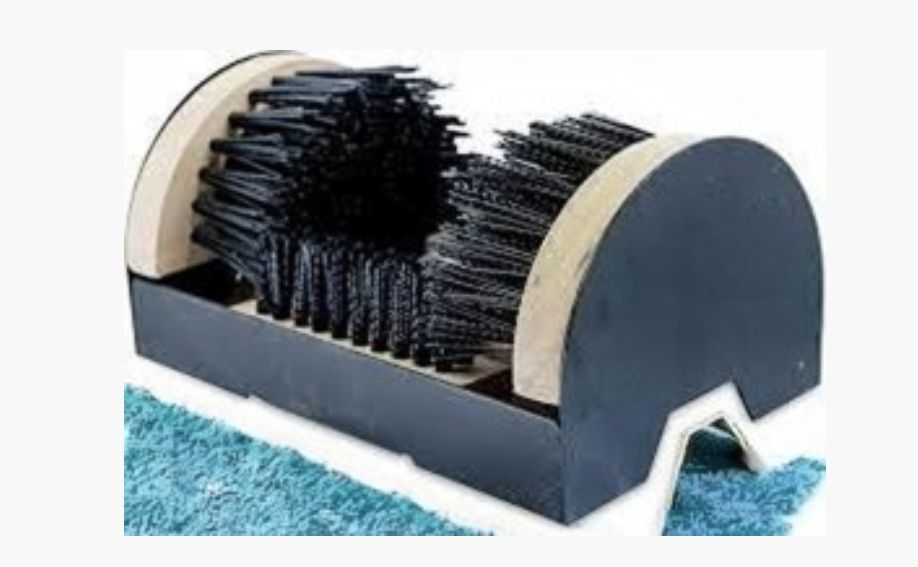Introduction
Your shoes go through a lot, whether you are an athlete, someone who likes to go for leisurely walks, or an outdoor enthusiast outdoor shoe brush take a vital role. Our shoes are constantly put to the test by muddy pathways and dusty sidewalks, which causes them to become dirty and worn out. Maintaining the aesthetic appeal of your outdoor shoes through routine cleaning also increases their lifespan, allowing you to get the most use out of your purchase.
Table of Contents
- Why Cleaning Your Shoes Matters
- The Different Types of Outdoor Shoe Brushes
- 1. Bristle Material Matters
- 2. Understanding Soft Bristle Brushes
- 3. The Power of Stiff Bristle Brushes
- The Best Brushes for Different Shoe Materials
- 1. Cleaning Leather Shoes
- 2. Suede and Nubuck Shoe Care
- 3. Caring for Canvas and Fabric Footwear
- 4. Maintaining Rubber and Plastic Soles
- The Do’s and Don’ts of Shoe Brushing
- 1 Do’s
- 2. Don’ts
- Creating a Shoe Cleaning Routine
- Cleaning Your Shoes in Special Situations
- 1. Removing Stubborn Stains and Marks
- 2. Dealing with Mud and Dirt
- How to Properly Store Your Shoe Brushes
- FAQs

Why Cleaning Your Shoes Matters
Properly cleaning your outdoor shoes is essential for several reasons. It mostly aids in maintaining the shoes’ appearance, making them appear brand-new and presentable. Second, it avoids dirt and debris buildup, which can result in premature wear and tear. Additionally, routinely washing your shoes can stop the development of bacteria and fungi, keeping your feet fresh and healthy. Therefore many working pleases installed that outdoor shoe brushes.
The Different Types of Outdoor Shoe Brushes
The type of bristle your shoe brush has plays a significant role in its cleaning effectiveness. Two main types of shoe brush bristles are commonly used: soft bristles and stiff bristles.
Understanding Soft Bristle Brushes
Soft bristle brushes are typically made of materials like horsehair or synthetic fibers. These brushes are ideal for delicate shoe materials like leather and suede. The soft bristles effectively remove dirt and dust without scratching the shoe’s surface.
The Power of Stiff Bristle Brushes
Stiff bristle brushes, on the other hand, are made of tougher materials like nylon or metal. These brushes are best suited for cleaning robust materials like rubber or plastic soles. They are excellent at removing stubborn dirt and mud from the shoe’s treads.
The Best Brushes for Different Shoe Materials
Cleaning Leather Shoes
Leather shoes require gentle care to maintain their elegance and longevity. To clean leather shoes, use a soft bristle brush to remove any loose dirt or dust. Then, apply a small amount of leather cleaner and use a damp cloth to wipe away stains. Finish by polishing the shoes with a leather conditioner to keep them supple.
Suede and Nubuck Shoe Care
Suede and nubuck shoes are sensitive to water, so avoid using water-based cleaners. Instead, use a specialized suede brush to gently remove stains and restore the nap. Use a suede eraser or a solution of white vinegar and water to remove tough stains.
Caring for Canvas and Fabric Footwear
Canvas and fabric shoes are relatively easy to clean. Use a soft brush to scrub away dirt and stains. For stubborn marks, create a paste using baking soda and water, apply it to the affected areas, and then scrub with the brush. Allow the shoes to air dry after cleaning.
Maintaining Rubber and Plastic Soles
Rubber and plastic soles can accumulate dirt quickly, but cleaning them is straightforward. Use a stiff brush to remove debris and dirt from the treads. You can also soak the soles in warm soapy water and scrub with the brush for a thorough cleaning.
The Do's and Don'ts of Shoe Brushing
Do's
- Do clean your outdoor shoes regularly to prevent the buildup of dirt and bacteria.
- Do use the appropriate type of brush for the material of your shoes.
- Do let your shoes air dry after cleaning them.
Don'ts
- Don’t use harsh chemicals or bleach on your shoes, as it may damage the material.
- Don’t submerge leather, suede, or nubuck shoes in water.
- Don’t forget to clean the brushes regularly to avoid transferring dirt back to your shoes.
- Creating a Shoe Cleaning Routine
Cleaning Your Shoes in Special Situations
Removing Stubborn Stains and Marks
For tough stains and marks, such as oil or grass stains, treat them as soon as possible. Use a specific stain remover or a solution of water and mild soap. Apply the solution to the affected areas and gently scrub with a brush.
Dealing with Mud and Dirt
After hiking or walking through muddy terrain, let the mud dry before attempting to clean. Once dry, use a stiff brush to remove as much mud as possible. Then, clean the shoes following the appropriate method for their material.
How to Properly Store Your Shoe Brushes
To ensure your shoe brushes last longer, proper storage is essential. Keep the brushes in a dry place away from direct sunlight. Additionally, consider designating a separate brush for each type of shoe material to prevent cross-contamination. But outdoor shoe brush don’t has that type of problems because it is taken care by someone else.
Conclusion
Taking care of your outdoor shoes is crucial for their appearance, functionality, and durability outdoor shoe brush take a vary good role. By following the appropriate cleaning methods and using the right brushes, you can keep your shoes in excellent condition for many adventures to come. Remember to tailor your cleaning routine to suit each pair of shoes, and never compromise on the quality of your shoe brushes.
FAQs
How often should I clean my outdoor shoes?
Cleaning frequency depends on how often you wear your shoes and the conditions they face. Shoes worn regularly should be cleaned once a week, while less frequently worn shoes can be cleaned monthly.
Can I use the same brush for all types of shoes?
To prevent cross-contamination, it is best to use separate brushes for different types of shoe materials. Soft bristle brushes are suitable for delicate materials like leather and suede, while stiff bristle brushes work well for rubber and plastic soles.
Should I clean my shoes if they are not visibly dirty?
Yes, regular cleaning prevents the buildup of unseen dirt and bacteria, extending the life of your shoes and keeping them fresh and odor-free.
Can I use water on all types of shoes during cleaning?
No, water can damage certain materials like suede and nubuck. Use water-based cleaners only on materials that can withstand water.
Are shoe cleaning kits worth investing in?
Yes, shoe cleaning kits usually come with the appropriate brushes and cleaners for different materials, making them a valuable investment for maintaining your shoes condition. But outdoor shoe brush exist in various places now.




5 thoughts on “Outdoor Shoe Brushes 101: A Comprehensive Guide to Cleaning Your Shoes!”